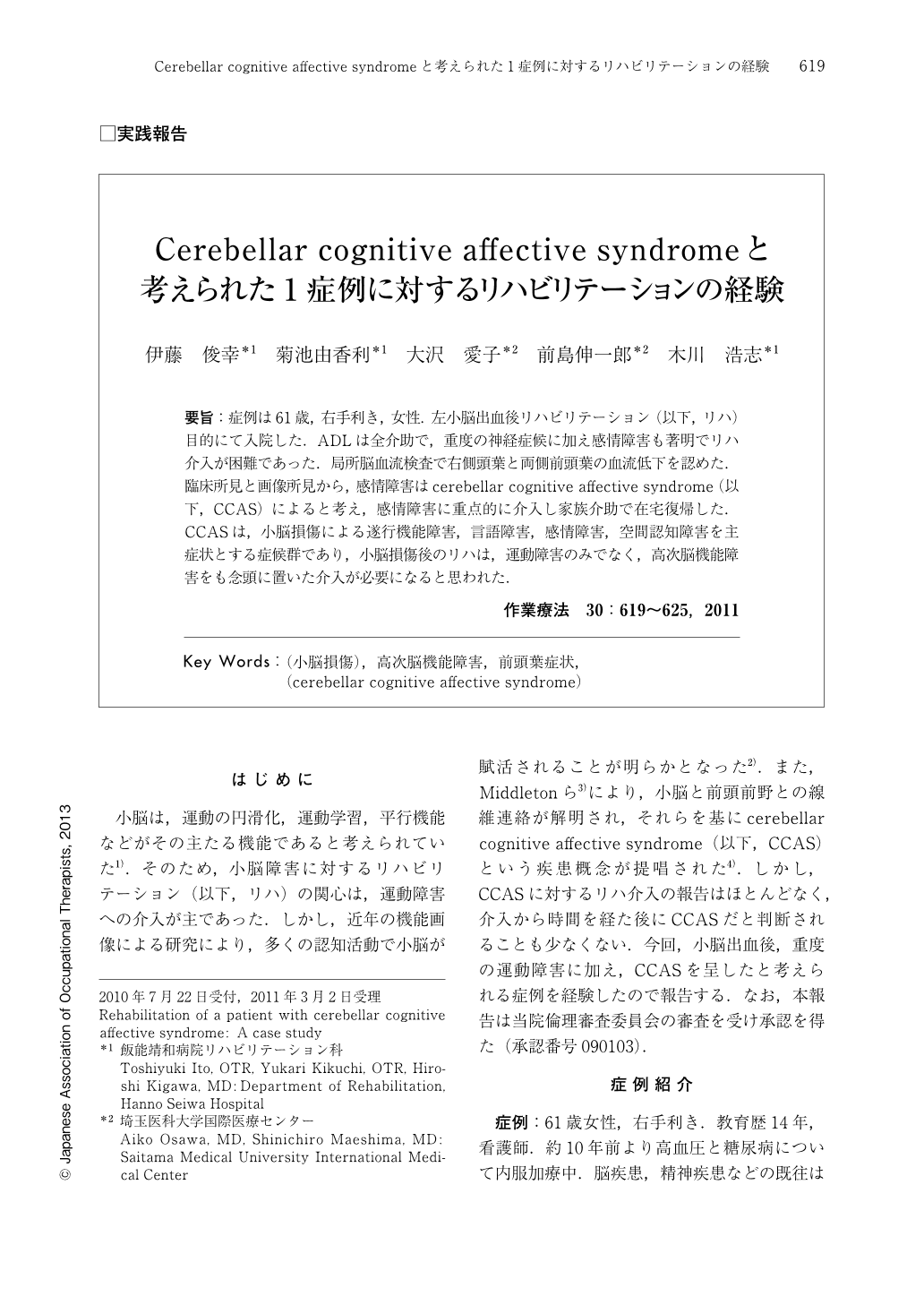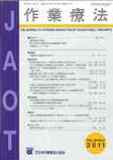Japanese
English
- 販売していません
- Abstract 文献概要
- 1ページ目 Look Inside
- 参考文献 Reference
要旨:症例は61歳,右手利き,女性.左小脳出血後リハビリテーション(以下,リハ)目的にて入院した.ADLは全介助で,重度の神経症候に加え感情障害も著明でリハ介入が困難であった.局所脳血流検査で右側頭葉と両側前頭葉の血流低下を認めた.臨床所見と画像所見から,感情障害はcerebellar cognitive affective syndrome(以下,CCAS)によると考え,感情障害に重点的に介入し家族介助で在宅復帰した.CCASは,小脳損傷による遂行機能障害,言語障害,感情障害,空間認知障害を主症状とする症候群であり,小脳損傷後のリハは,運動障害のみでなく,高次脳機能障害をも念頭に置いた介入が必要になると思われた.
Cerebellar cognitive affective syndrome (CCAS) is a neurobehavioral syndrome that may develop after congenital and acquired cerebellar lesions. The syndrome consists of deficits in executive functioning, visuo-spatial memory and language, and also involves personality and behavioral changes. We report on a patient with cerebellar hemorrhage who developed CCAS.
The patient was a 61-year-old right-handed woman who was hospitalized due to disturbance of consciousness. CT revealed cerebellum bleeding, and after the craniotomy hematoma evacuation, the patient was transferred to our hospital for about 1 month. She showed disturbance of consciousness and severe ataxia of the trunk and the extremities, but no paralysis or disturbance of sensation. The loss of articulation was severe, and communication was impaired. She was unable to fix on time or place and exhibited short-term memory disturbance, attentional disorder, dysexecutive function and affective disturbance. Due to these symptoms, her activities of daily living were severely impaired. In the Functional Independent Measure, motor item was 14, cognitive item was 8 and she needed complete assistance in her daily living. MRI showed a large hemorrhage in the left bilateral cerebellar hemisphere, and a Tc-99m-ECD SPECT revealed hypoperfusion areas in the left cerebellar hemisphere and a right cerebral hemisphere.
Cognitive dysfunction in patients with cerebellar damage is assumed to develop from disturbance of the cerebrocerebellar circuit, and that rehabilitation of patients should include assessments of not only the motor function, but also of detailed assessment of neuropsychological and neurobehavioral function.

Copyright © 2011, Japanese Association of Occupational Therapists. All rights reserved.


